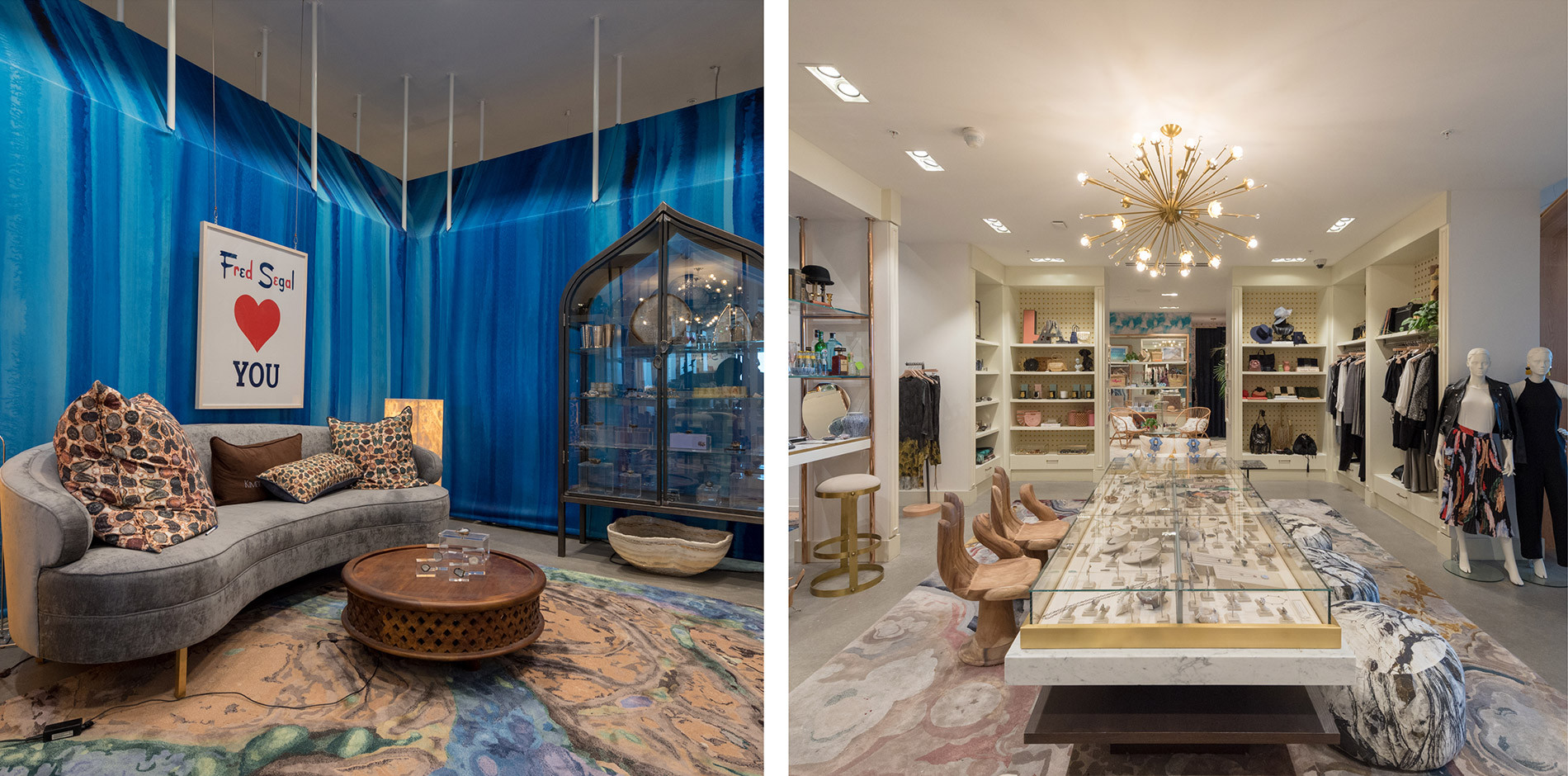Although there are claims that e-commerce has taken over sales from brick-and-mortar stores, the numbers don’t lie. According to Forbes, about 91% of all retail sales in 2017 occurred in brick-and-mortar locations. The rapid growth of e-commerce has changed consumer preferences and expectations, but it hasn’t killed retail—just forced it to evolve.
Brands are transforming their physical stores to be more than just a place for transactions, creating experiences that fulfill customers’ needs. Take Fred Segal, which opened its first retail location in 30 years on Sunset Boulevard in West Hollywood and created a one-stop-shop for a full day of experiences. The 15,000-square-foot flagship houses a restaurant, gym, and expansive retail space complete with both shop-in-shops and pop-ups.
Brick-and-mortar locations also provide a tangible way to tell a brand’s story, providing another connection point for consumers. Lacoste recently redesigned its flagship on Rodeo Drive to embody its newest Le Club concept, which was inspired by founder Rene Lacoste’s tennis locker room. Details throughout the space remind consumers of the brand’s roots in tennis, and provide personal experiences through customization stations and a dedicated VIP room.
Many online-only brands are becoming increasingly focused on opening brick-and-mortar locations to be closer to their customers. Luxury consignment retailer The RealReal opened its first brick-and-mortar in New York City’s SoHo neighborhood after seeing success with a two-week pop-up. The flagship showcases its one-of-a-kind inventory and includes a coffee bar and space for daily workshops and special events. The store also provides consignment drop-offs, valuations, repairs, alterations, and authentications—providing a convenience factor that can’t be found online.
To be successful, retailers must keep pace with consumers and provide them the connection and convenience they need to remain loyal to a brand. Rather than prioritizing either e-commerce or brick-and-mortar, brands need to find a balance between the two that is beneficial for both them and their consumers.
